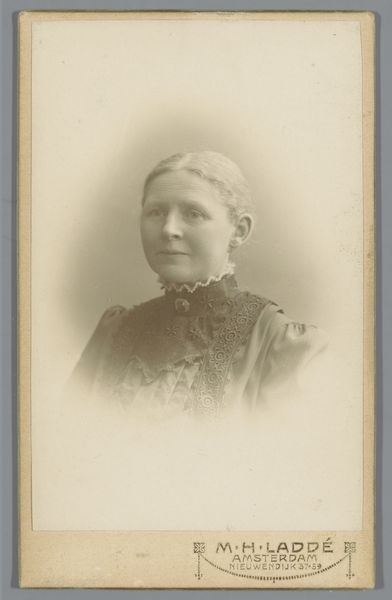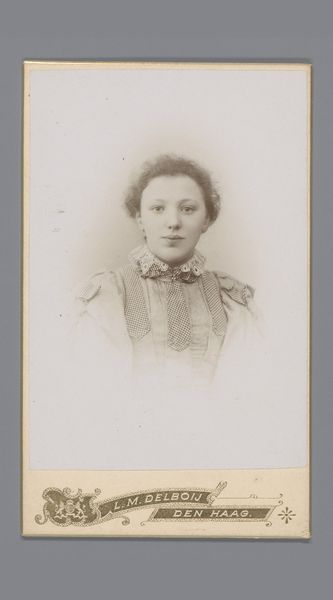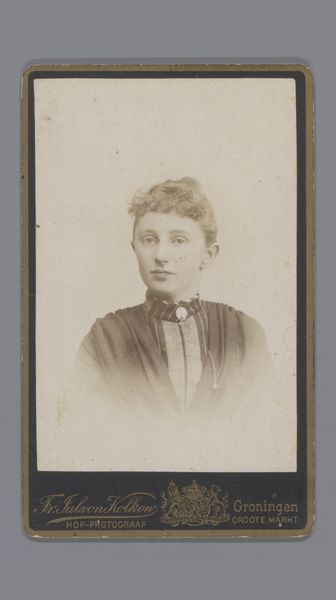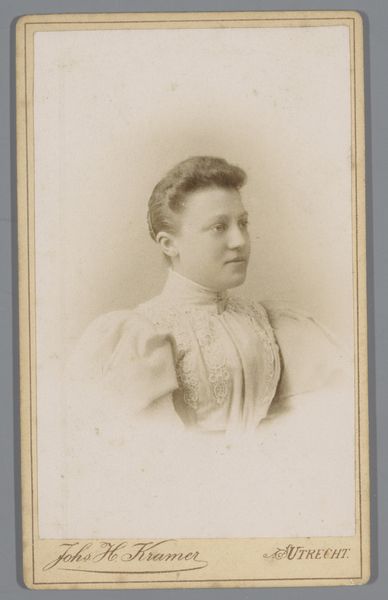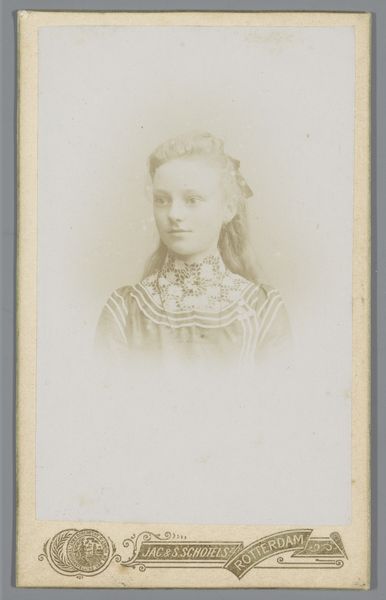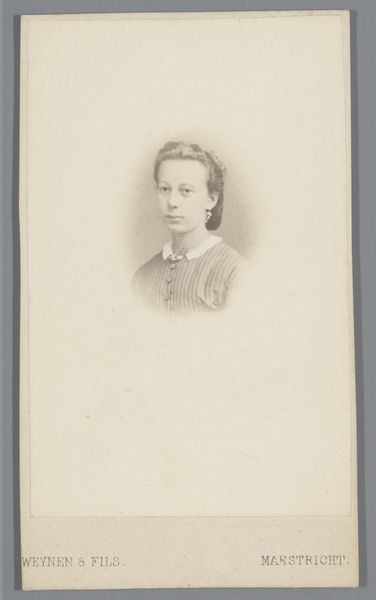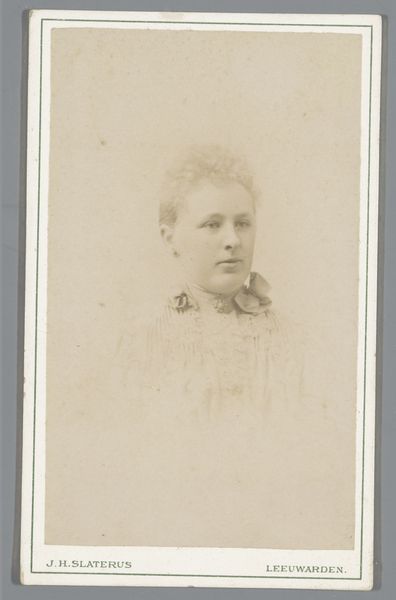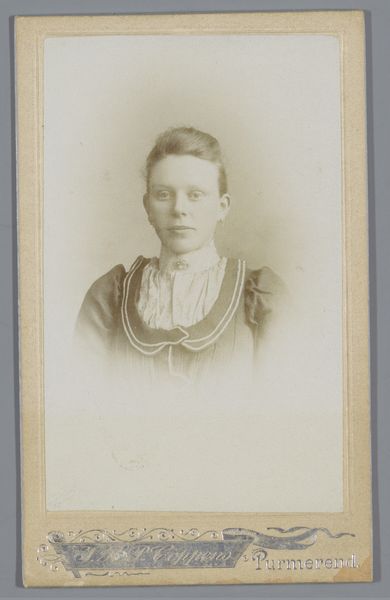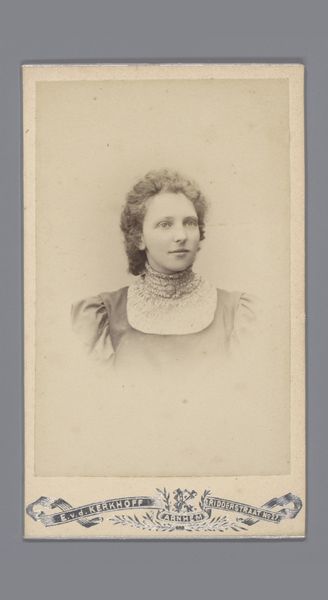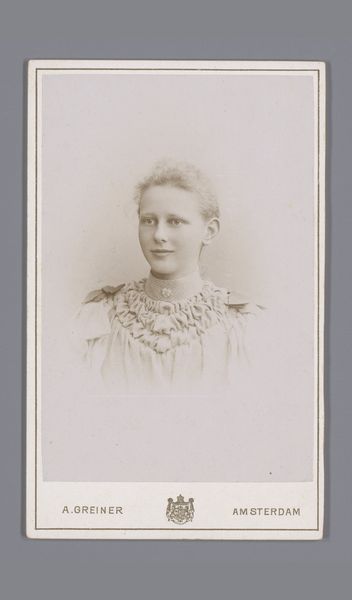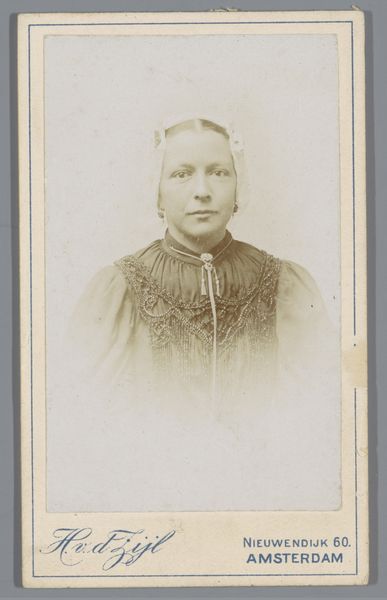
print, photography
#
portrait
# print
#
photography
#
realism
Dimensions: height 102 mm, width 64 mm
Copyright: Rijks Museum: Open Domain
Curator: This striking photograph, known as "Portret van een onbekend meisje" or "Portrait of an Unknown Girl," was captured by Johan Christiaan Reesinck sometime between 1891 and 1907. Editor: The image has such a delicate, almost ethereal quality. There’s something undeniably poignant about her gaze. It's so typical for realism, but you still perceive so many symbols there. Curator: Indeed, that realism certainly grounds it, but let's delve deeper. Consider the lace, for instance. While seemingly decorative, its high collar and intricate pattern served to confine and define a certain societal role for women at the time, embodying expected ideals of feminine modesty and restraint. It could imply the liminal, or threshold symbolism. Editor: It’s also interesting that the girl is nameless, the archetypical maiden on the edge of womanhood, gazing to the future. That blank space of an unwritten life. It echoes countless portraits of girls throughout the centuries, each representing a similar moment of anticipation and perhaps, even uncertainty. Curator: Absolutely. We can think about that societal expectation on girl's development. Her innocence is emphasized, but one must question if that supposed innocence was truly ever hers to possess, or constructed for her by others, through institutions and structures she inhabited daily. The photo presents an exterior, a mask so to speak. But to which degree does it define or imprison its subject? Editor: The pose is so typical to the culture, but it’s intriguing that even through the strictures, the viewer picks up the emotional core through visual language. Her eyes especially... Even now, a certain melancholy shines through. Curator: I agree. Looking at this photo through a modern lens allows us to contemplate those structures but, more importantly, to engage in a dialogue with the individual. Her potential subversion or her own means of negotiating and resisting expected gender roles is as much part of the narrative here. Editor: Well, this photograph leaves one with plenty to ponder. Even though its historical circumstances shape the sitter, the symbols presented allow to trace our own cultural continuity in some measure.
Comments
No comments
Be the first to comment and join the conversation on the ultimate creative platform.
